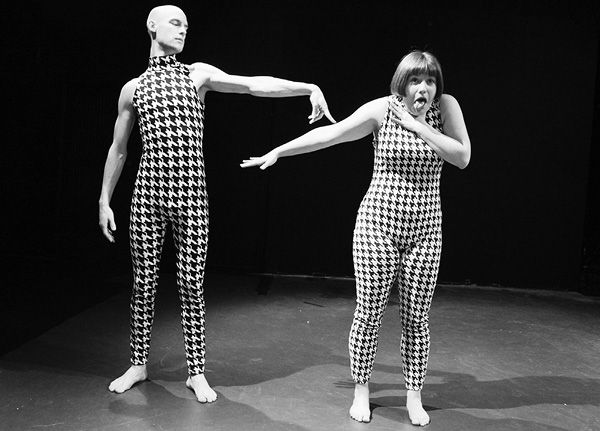
TIME HAD A JOB
first performed on May 28, 2014
Red Eye Theater, Minneapolis, MN
performed 8 times in 2014
FIRE DRILL / EMILY GASTINEAU, BILLY MULLANEY
Minneapolis, MN
633944191e633944191m633944191i633944191l633944191y633944191.633944191g633944191a633944191s633944191t633944191i633944191n633944191e633944191a633944191u633944191@633944191g633944191m633944191a633944191i633944191l633944191.633944191c633944191o633944191m633944191 633944191/633944191 633944191b633944191i633944191l633944191l633944191y633944191m633944191u633944191l633944191l633944191a633944191n633944191e633944191y633944191@633944191g633944191m633944191a633944191i633944191l633944191.633944191c633944191o633944191m
fire-drill.org
TIME HAD A JOB
FIRE DRILL / EMILY GASTINEAU, BILLY MULLANEY
“Time Had a Job” is a 15 minute contemporary performance duet comprised of 150 discrete six second segments, each with its own choreographic logic, performance quality and sound design. We borrow the structural principle of the Vine compilation and perform the six-second segments sequentially without interruption or repetition. A quick blackout forms the visual transition between each six second section, while the sound score jump-cuts between corresponding six second clips of music, noise, special effects, television, etc. The movement in the individual segments spans a wide range of choreographic intentions—the recognizably “dance”-like, the gestural, the mimetic, the theatrical and varying qualities of stillness—requiring lightning shifts in performance quality throughout. A key conceptual text we applied to the piece was Sianne Ngai’s Our Aesthetic Categories: Cute, Zany Interesting. Between the shortness (cuteness) of the individual dances, and the durational and serial nature (zany and interesting, respectively), Ngai’s text informed the range of contemporary aesthetics in the work.
Both we as performers as well as the audience are asked to juggle multiple senses of timing—clock time, rhythmic time, body/felt time, and durational time—and sense the congruence and disjunctures between them. The repetitive structure presents an alternative to the classic sense of choreographic development, and builds a sense of audience expectation in the overall duration of the piece. “Time Had a Job” challenges the viewer to process large amounts of information very quickly, to decide whether and how to draw connections between individual pieces and to test their expectations for change over time.
The pieces in our body of work focus on modes of contemporary spectatorship, often creating a particular tension for the viewer. The tension we create in “Time Had a Job” pulls between the audience’s engagement and investment, and a state of boredom and burnout over time. Viewers oscillate between these two states as the piece presents an incessant barrage of new information within a rigid choreographic structure. This tactic references the sense of timing in today’s media landscape and instant-share culture: How many news reports of shootings and injustices does it take before a viewer feels apathetic towards them? How long can we sustain a genuine interest in pictures of cats? “Time Had a Job” similarly saturates the audience and encourages a wide range of qualities of attention as the piece progresses—warning that no piece will last more than six seconds, and promising that something new is always six seconds away.